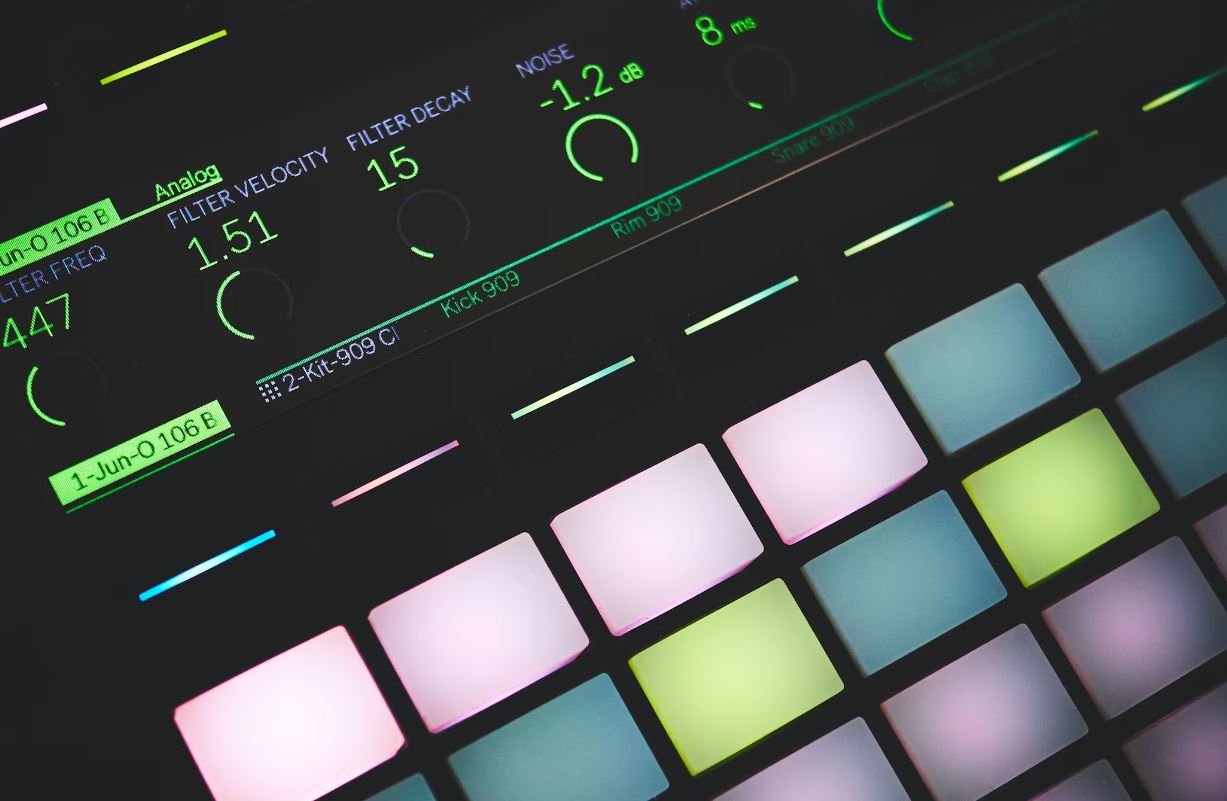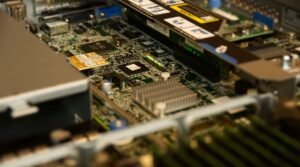What Is Generative Music?
Generative music is a form of music that is created using algorithms and systems to generate music in real-time. Unlike traditional music composition, which is typically fixed and linear, generative music is characterized by its ability to evolve and adapt, creating unique and never-ending musical compositions.
Key Takeaways
- Generative music is created using algorithms and systems to generate music in real-time.
- It is characterized by its ability to evolve and adapt, creating unique and never-ending musical compositions.
- This type of music can be composed using various techniques, such as chance operations, randomness, and artificial intelligence.
Generative music can be composed using various techniques, such as chance operations, randomness, and artificial intelligence. **By utilizing these techniques, composers can create music that is constantly changing and evolving, without the need for manual intervention**. Chance operations involve using random elements or processes to determine the outcome of a musical composition. Randomness, on the other hand, introduces unpredictability into the music by incorporating elements of chance. Artificial intelligence can also play a role in generative music by analyzing patterns and making decisions based on predefined rules.
**One interesting aspect of generative music is its ability to create music that is not limited by traditional compositional structures**. Traditional music usually follows a predetermined structure, such as verse-chorus-verse. In generative music, the composition can continue indefinitely, taking unexpected turns and creating new musical patterns beyond what is typically seen in traditional compositions.
Generative Music Techniques
There are several common techniques used in generative music that help to create its unique characteristics:
- **Markov Chains**: Markov chains are mathematical models that can be used to generate sequences of events based on probabilistic transitions between states. In generative music, Markov chains can be used to create variations of musical themes or generate new melodies by analyzing and predicting the probabilities of musical notes or chords.
- **Fractals**: Fractals are mathematical patterns that repeat themselves at different scales. In generative music, fractals can be used to create complex and intricate musical structures by applying mathematical formulas to generate melodies or rhythms.
- **L-Systems**: L-Systems, or Lindenmayer systems, are formal grammars that can be used to generate complex and self-similar structures. In generative music, L-Systems can be used to generate musical patterns with recursive rules, creating evolving and repetitive musical compositions.
**Table 1** showcases the different techniques used in generative music:
| Technique | Description |
|---|---|
| Markov Chains | Mathematical models used to generate sequences of events based on probabilistic transitions between states. |
| Fractals | Mathematical patterns that repeat themselves at different scales. |
| L-Systems | Formal grammars used to generate complex and self-similar structures. |
**Another interesting aspect of generative music** is its potential for creating unique and personalized musical experiences for listeners. Since generative music is not fixed or static, each listening experience can be different and tailored to the individual. This opens up possibilities for personalized playlists or sound installations that adapt to the listener’s preferences and create a truly immersive and interactive musical experience.
Applications of Generative Music
Generative music has found applications in various fields, including:
- **Background Music**: Generative music can be used as background music in various settings, such as cafés, offices, or public spaces, where the music creates a pleasant and ever-changing ambiance.
- **Video Games and Film**: Generative music can enhance the interactive experience in video games by creating dynamic soundscapes that adapt to the gameplay. It can also be used in film scoring to create unique and atmospheric music that complements the visuals.
- **Meditation and Relaxation**: Generative music is often used in meditation and relaxation applications to create calming and soothing sound environments that aid in relaxation and focus.
**Table 2** showcases the different applications of generative music:
| Application | Description |
|---|---|
| Background Music | Used in various settings to create a pleasant and ever-changing ambiance. |
| Video Games and Film | Enhances the interactive experience in video games and creates unique atmospheric music for film scoring. |
| Meditation and Relaxation | Used to create calming and soothing sound environments for meditation and relaxation. |
**One final interesting fact about generative music:** It can be a powerful tool for artistic exploration and pushing the boundaries of traditional music composition. With generative music, composers and artists can experiment and create compositions that challenge traditional notions of melody, harmony, and structure, leading to innovative and groundbreaking works of art.
Conclusion
Generative music is a fascinating field that combines technology, algorithms, and artistic expression to create unique and ever-evolving musical compositions. By utilizing techniques such as chance operations, randomness, and artificial intelligence, generative music offers opportunities for personalized listening experiences and opens new possibilities for innovation in the world of music. Whether used in background music, video games, or artistic experimentation, generative music continues to push the boundaries of traditional composition and transform the way we experience and appreciate music.

Common Misconceptions
Paragraph 1:
Generative music is often misunderstood as simply random sounds that are generated by a computer program. However, this is a common misconception.
- Generative music is created with predefined algorithms.
- It follows a set of rules to create sound patterns.
- The result is not entirely random, but rather a combination of ordered elements.
Paragraph 2:
Another misconception is that generative music lacks creativity and cannot be considered as real music. This belief disregards the artistic aspects and innovation behind generative music.
- Generative music is created by talented composers and musicians.
- It involves careful planning and composition.
- The use of algorithms and automation allows for new and unique musical expressions.
Paragraph 3:
Many people assume that generative music is only produced by computers and machines, without any human involvement. However, this is not accurate.
- Humans play a crucial role in designing and programming generative music systems.
- Composers guide the algorithms and define the parameters for the music generation.
- Generative music tools are tools for human creativity.
Paragraph 4:
There is a misconception that generative music is always ambient or background music that lacks focus or structure. This is not true as generative music can have various styles and forms.
- Generative music can be energetic and driving, like in certain electronic genres.
- It can incorporate rhythm, melody, and harmonies to create engaging compositions.
- Generative music can also be experimental and avant-garde, pushing the boundaries of traditional musical structures.
Paragraph 5:
Some individuals believe that generative music is mainly an academic pursuit with little relevance to mainstream music or everyday listening. However, generative music is gaining popularity among musicians and listeners alike.
- Artists and composers use generative techniques to explore new musical territories.
- Generative music is being integrated into commercial projects, such as games, films, and installations.
- Listeners enjoy generative music for its ability to create immersive and ever-evolving sonic experiences.

What Is Generative Music?
Generative music is a fascinating approach to creating music that evolves and changes in real-time. Instead of following a fixed composition, generative music utilizes algorithms, rules, and randomness to generate an unpredictable and unique musical experience. Below are ten captivating examples that showcase the diverse and innovative world of generative music.
Symphonic Rain
A symphony created by simulating the sounds of different raindrops falling on various surfaces, producing a mesmerizing symphonic composition with the ambiance of a peaceful afternoon shower.
| Raindrop | Surface | Sound |
|---|---|---|
| Splatter | Metal | Ting |
| Drizzle | Glass | Faint tinkling |
| Downpour | Concrete | Rapid tapping |
Quantum Harmonies
An exploration into the quantum realm inspires a generative musical piece where each note represents a quantum particle’s behavior, resulting in harmonies that create a sense of quantum entanglement.
| Quantum State | Note | Effect |
|---|---|---|
| Superposition | E | Chords with multiple tonalities |
| Entanglement | G# | Mirroring melodies |
| Decoherence | C | Dissonant progression |
Robotic Symphony
Robots equipped with musical algorithms collaborate to perform a symphony, each contributing their unique sounds and improvisations, demonstrating the integration of machine creativity with human musical intuition.
| Robot | Instrument | Style |
|---|---|---|
| K8 | Piano | Jazz improvisation |
| B3-1 | Violin | Classical melodies |
| X7-9 | Drums | Afrobeat rhythms |
Genetic Beatbox
Using a genetic algorithm, a beatbox generator evolves and adapts over time, creating rhythmic patterns reminiscent of various human beatboxers. Witness the evolution of beatboxing through artificial evolution.
| Generation | Beatbox Pattern | Influence |
|---|---|---|
| 1 | Boots & cats | Basic beatboxing |
| 25 | K snare | Inspired by Kenny Muhammad |
| 50 | Dubstep bass | Influenced by Dub FX |
Dreamlike Landscapes
An immersive audio experience where generative music collaborates with virtual reality, producing ever-changing soundscapes harmonizing with the viewer’s virtual environment, transporting them to breathtaking, dreamlike landscapes.
| Environment | Sound | Mood |
|---|---|---|
| Mountains | Echoing melodies | Serenity |
| Underwater | Fluid melodies | Ethereal tranquility |
| City | Rhythmic urban sounds | Vibrant energy |
Cosmic Harmonics
The vastness of space inspires this generative musical exploration, where each note corresponds to the frequency of celestial bodies. Adrift in melodies crafted from the symmetry and harmony of our universe.
| Celestial Body | Note | Effect |
|---|---|---|
| Earth | C | Stable foundation |
| Comets | E | Glistening arpeggios |
| Supernovae | A | Epic crescendos |
Deep Learning Duet
Neural network-powered music generation produces an equal partnership between human and machine, as machine-learned musical patterns intertwine with human composition, creating a captivating duet of artificial and human creativity.
| Composition | Technique | Style |
|---|---|---|
| AI-generated | Arpeggios | Baroque style |
| Human-composed | Freeform improvisation | Jazz fusion |
| AI-generated | Repeating motifs | Minimalist |
Infinite Melodies
Generative musical software creates an endless stream of melodies that never repeat, providing an immersive musical experience which constantly evolves and surprises the listener, offering an infinite source of inspiration.
| Melody | Duration | Progression |
|---|---|---|
| Melody #1 | 2:37 | Ascending |
| Melody #2 | 4:12 | Descending chromatic |
| Melody #3 | 3:51 | Random jumps |
Unconventional Orchestration
Exploring new frontiers of composition, an unconventional approach to orchestration uses generative algorithms to generate unique combinations of instruments, resulting in a symphony with extraordinary sound combinations.
| Instruments | Combination | Timbre |
|---|---|---|
| Violin | Timpani | Ethereal and mysterious |
| Harp | Electric guitar | Uniquely textured |
| Flute | Tuba | Surprisingly harmonious |
Conclusion
Generative music opens doors to endless creativity, merging technology, and human expression. Each table presents a distinct aspect of generative music, showcasing its ability to innovate across multiple genres and foster new artistic experiences. As generative music continues to evolve, it invites us to explore uncharted sonic territories and transforms our relationship with music, providing a glimpse into the future of musical composition and performance.
Frequently Asked Questions
What Is Generative Music?
What is the definition of generative music?
Generative music refers to a type of music that is created using algorithms or systems that generate sounds, melodies, rhythms, and structures in a non-linear and unpredictable manner. Unlike traditional composed music, generative music is often described as “self-perpetuating” as it can continuously create and evolve over time.
How Does Generative Music Work?
Can you explain the process behind generative music?
Generative music is typically created using algorithms, rules, or systems that define parameters for sound generation. These algorithms can include randomness, probability, and interaction with user inputs or environmental data. The output of these algorithms can be used to generate sounds, melodies, or rhythms, often in real-time or through pre-programmed sequences and patterns.
What are the Benefits of Generative Music?
Why is generative music popular?
Generative music offers unique benefits, such as its ability to create varied and unpredictable compositions, allowing listeners to experience new and unexpected sonic landscapes. It can provide a sense of immersion, relaxation, and exploration as the music unfolds organically. Generative music also lends itself well to background or ambient soundscapes in various multimedia applications.
What Tools or Software Can I Use to Create Generative Music?
Which tools facilitate generative music creation?
There are various software and tools available for creating generative music, ranging from standalone applications to plugins for digital audio workstations (DAWs). Some popular options include Max/MSP, SuperCollider, Pure Data, and TidalCycles. These tools often provide a means to program, control, and manipulate the algorithms and parameters that generate the music.
Can Generative Music Be Created in Real-Time?
Is it possible to generate music in real-time?
Yes, generative music can be created and played back in real-time. This allows for dynamic and interactive experiences where the music responds to user inputs or environmental data. Real-time generative music is often used in installations, live performances, and interactive multimedia projects to create immersive and ever-evolving soundscapes.
What Types of Artists or Musicians Use Generative Music?
Who are the typical users of generative music?
Generative music is embraced by a diverse range of artists, musicians, and composers across various genres. It has found its place in experimental music, electronic music, ambient music, and sound art. Many avant-garde composers have also employed generative techniques in their compositions, pushing the boundaries of traditional music creation.
Is Generative Music Copyrighted?
What is the copyright status of generative music?
Like any other form of music, generative music can be copyrighted if it meets the necessary criteria for protection. The copyright typically covers the specific composition, arrangement, or recording of generative music. However, since generative music is often created using algorithms and systems, the underlying generative processes themselves may not be copyrightable.
Can I Generate My Own Unique Generative Music?
Is it possible for me to create my own generative music?
Absolutely! With the availability of various tools and resources, you can learn and experiment with generative music creation. Whether you have programming skills or prefer user-friendly interfaces, there are options suitable for both beginners and experienced musicians. Exploring tutorials, online communities, and attending workshops can be beneficial in developing your skills and creating your unique generative music compositions.
Where Can I Listen to Generative Music?
Where can I find generative music to listen to?
Generative music is available through various platforms and streaming services. Some artists and musicians release their generative compositions on dedicated websites, Bandcamp, or SoundCloud. You can also discover generative music through curated playlists, ambient music channels, or by exploring the works of renowned generative music artists.
Can Generative Music Be Appreciated in Live Performances?
Is generative music suitable for live performances?
Yes, generative music can be experienced and appreciated in live performances. Artists and musicians often use real-time generative systems to create unique musical journeys during concerts, installations, or multimedia events. Live generative performances allow for improvisation, collaboration, and the creation of immersive sonic environments that resonate with the audience in the moment.




